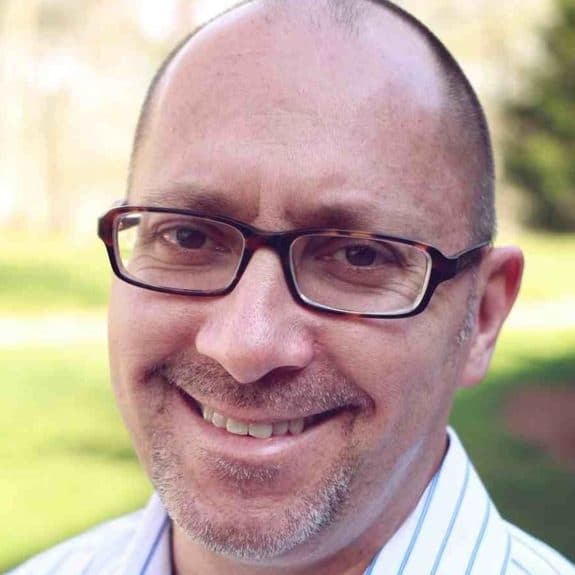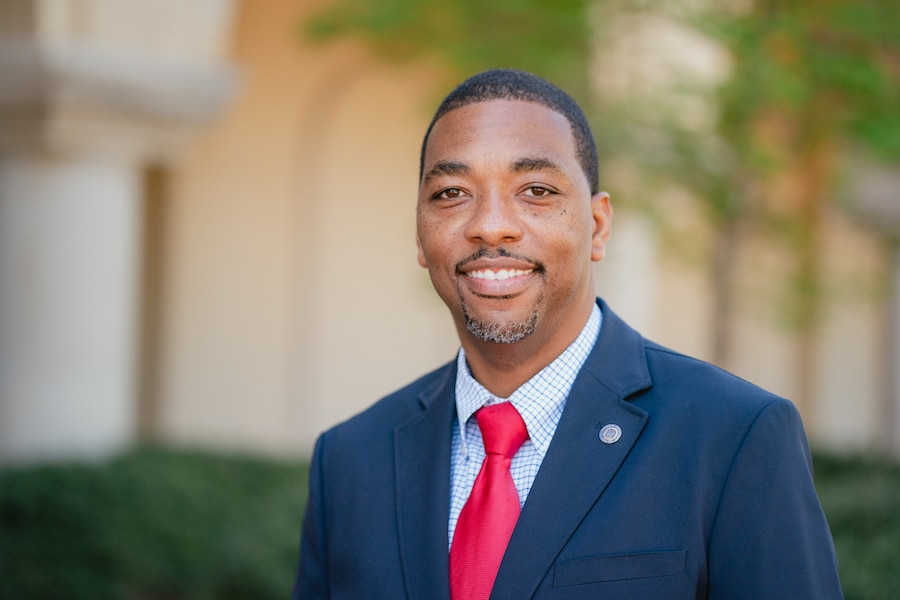Those words, hammered out in 80-point type, dominate a full page, back-cover ad in the spring 2012 issue of Southwestern News, flagship magazine of Southwestern Baptist Theological Seminary.
The ad—with a goat peering onto the page and eyeballing the reader—is meant to punctuate the content inside: 45 pages of text and rich graphics devoted to an unprecedented event at the Fort Worth school.
“Dead Sea Scrolls & the Bible: Ancient Artifacts, Timeless Treasures,” begins its run on campus July 2 and runs through January 2013, displaying artifacts from what is considered the greatest biblical archaeology discovery of the modern era.
Sixteen Dead Sea Scroll fragments, including seven owned by Southwestern, will be available for viewing, some of which will be public for the first time. The featured scrolls contain portions of the Old Testament books of Genesis, Exodus, Leviticus, Deuteronomy, Isaiah, Daniel, Ecclesiastes, and the Psalms.
One of the school’s acquisitions, called Paleo-Leviticus, written on goat skin, is among the oldest known Scripture fragments.
The term paleo, explained Steven Ortiz, associate professor of archaeology and biblical backgrounds and director of the school’s Charles D. Tandy Archaeology Museum, means “oldest of the old.”
The Dead Sea Scrolls, uncovered in desert caves near the Dead Sea and the Qumran settlement beginning in 1947 when a Bedouin shepherd went looking for a wayward goat, revolutionized biblical studies and gave crucial evidence of the Scripture’s accuracy from texts mostly dated from 150 B.C. to about 50 A.D., Ortiz said.
Prior to 1947, the oldest complete Old Testament copy was dated to around 900 A.D. But the Dead Sea Scrolls—retrieved over nearly 10 years from 11 desert caves—revealed portions of every Old Testament book except Esther, and a complete manuscript of Isaiah, explained Southwestern President Paige Patterson.
“And so it was very common for scholars to say that we really didn’t know what the Old Testament said—‘With 1,000 years of copying, who knows what mistakes were made?’ The Bible was not even fully reliable,” Patterson said in characterizing the arguments of biblical skeptics.
“But when we found the Dead Sea Scrolls, what we discovered is there are hardly any mistakes at all in copying. So we now know that what we have in our English Old Testament is very accurate.”
Also significant, Patterson said, is that the discovery of the prophetic books showed “copies of copies of copies,” indicating dates of authorship in keeping with the biblical timeline and giving evidence of their prophetic nature.
Also helpful, Ortiz added, is that “we have the Bible at the time of Jesus. That’s phenomenal. So we know that this is how Isaiah (the biblical text) looked, this is what Jesus would have read.”
The seven scroll fragments owned by the seminary are being unveiled for the public and for scholars to see for the first time, Ortiz said.
“Scholars knew about them but they hadn’t been seen,” he added. Also, a Genesis fragment on loan to the school will also be made public.
The scrolls exhibit will be staged in the newly opened McGorman Chapel, 4616 Stanley Avenue, on the Fort Worth campus.
With climate-controlled cases for the artifacts, the chapel corridors will be transformed into a museum. Visitors will view a brief film about the scrolls, experience a replica of Dead Sea cave number 4, and view ancient coins and pottery, early Bibles and texts.
Also planned are interactive “iScroll” kiosks where visitors can utilize cutting-edge digital imaging to view the scrolls as scholars do. A fully functioning simulated Qumran dig site will be set up where children can unearth shards from 2,000-year-old pottery.
There will also be a Dead Sea Scrolls bookstore and a genuine goathair tent just like those used by modern-day Bedoiun shepherds. The tent was unveiled on April 11 at a press conference to introduce the upcoming exhibit.
The exhibit is being presented by the seminary partly through a $1 million donation from Gary and Stephanie Loveless of Houston, who were also instrumental in Southwestern acquiring Dead Sea Scroll fragments beginning in 2009. Southwestern owns more Dead Sea Scroll manuscripts than any other higher education institution in North America.
Information on admission and hours of operation is available at seethescrolls.com. Group discounts are available for 10 people or more. Weekend admission (Friday or Saturday) will be $28 for adults, $24 for seniors 62 and older, $18 for students and $12 for children. Monday through Thursday, admission will be $25 for adults, $18 for seniors, $15 for students and $12 for children. Tickets may also be reserved by phone at 877-789-0876.














